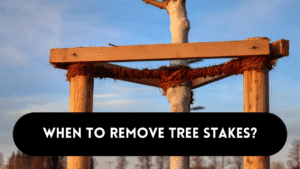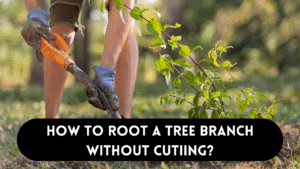Tree care is critical in our changing world. Trees provide us with clean air and shade, and they have been there for a long time, watching over us. But occasionally we have to make a difficult decision and say good-bye to a tree we adore. This is heartbreaking, but it is also an opportunity to remember and commemorate that tree. In this post, we’ll go over how to do precisely that. We’ll look at how to keep the memories of your beloved tree alive, even if it needs to die. From turning parts of it into special keepsakes to plant a tree where one was removed, we’ll explore ways to celebrate the tree’s life.
Plant a Tree Where One Was Removed
Planting a new tree in the same location as an existing one may seem like a smart idea, but it’s usually not the best option. Here’s why:
Limited Space:
If the old tree’s roots remain in the ground, there will be insufficient space for the new tree to spread its roots and grow appropriately. Consider it like sharing a room with someone; there simply isn’t enough space for both.
Changed Soil:
When an old tree is removed, the residual sawdust and stump can contaminate the soil. It alters the way soil works, causing it to be challenging for the new tree to obtain the nutrients it requires to grow large and strong.
Nutrient depletion:
The elderly tree most likely depleted the soil’s nutrients. So, planting a new tree in the same location is like trying to prepare food with an empty larder. The new tree will lack the nutrients it requires to survive.
Diseases and pests:
If the old tree had to be removed due to a disease or pest, those intruders might continue lurking in the soil. They may also go after the new tree, causing additional complications.
Why New Planting Site Is Better
Choosing a new planting location for a tree instead of replanting in the same spot is often a superior alternative for numerous fundamental reasons:
Soil Health:
Due to the breakdown of the prior tree’s roots and other reasons, soil conditions around the location where a tree was removed usually worsen. When choosing a new planting location, you can choose an area with healthier, more fertile soil, which gives a better foundation for the new tree’s growth.
Disease Prevention:
Planting in a different place decreases the chance of exposing the new tree to diseases or pathogens that may still be present in the soil where the old tree stood. This can considerably boost the new tree’s long-term health.
Avoiding root competition:
Trees have vast root systems, and planting a new tree in the same location can result in root competition with any residual roots from the old tree. Choosing a new place guarantees that the young tree will build a strong root system without competition or interference.
Spacing and Growth:
The previous tree may have been removed because it surpassed its place or caused problems with surrounding structures. Choosing an alternative planting location helps you evaluate spacing needs and avoid any conflicts in the future.
Diversity:
Planting different tree species in different locations on your property encourages biodiversity.
versity, which can improve the general health of your environment. Different trees attract various fauna and contribute to a more resilient ecology.
Aesthetic Considerations:
Choosing a new planting site allows you to improve the aesthetics of your home by strategically placing the new tree for improved landscape design and visual appeal.
Adaptation to location Conditions:
You can select a tree species that is well-suited to the unique conditions of the new location, whether it is sunny, shaded, damp, or dry. This raises the likelihood of the tree’s long-term success.
Can We Plant a Tree Near the Old Spot?
Yes, planting a new tree alongside the old one is a fantastic concept, and it is frequently a really acceptable alternative. This method honors the memory of the prior tree while avoiding some of the potential issues connected with planting in the same area. The following are the benefits of planting another tree near an existing one:
Planting near the old location guarantees that your new tree has adequate area to grow without competing with the old tree’s residual roots.
Soil Conditions:
The soil in the vicinity of the original location may still be healthy and ideal for tree development. It can support the young tree because there hasn’t been any disturbance from sawdust or stump removal.
Because the old tree’s roots are no longer present, the earth can recover and restore its nutrients over time, promoting the growth of the new tree.
Memorial Value:
By planting nearby, you keep the prior tree’s memory alive while allowing the new tree to establish itself in a more suitable habitat.
Disease Prevention:
Planting something somewhat distant from the prior location decreases the risk of any illnesses or pests that affected the previous tree.
Consider elements like space, sunlight, and the special demands of the new tree species while selecting a position near the old one. This deliberate approach can provide the optimum conditions for your new tree to grow while also meaningfully maintaining the memory of the previous tree.
FAQs
Can trees grow back on their own?
Yes, trees may recover and develop on their own through mechanisms such as seed dissemination and root sprouting. When dormant buds on tree stumps or roots start to sprout, the wind, animals, or birds carry the seeds. However, success is dependent on environmental conditions and species.
Will roots grow after the tree is removed?
No, roots will not develop once a tree is removed. When a tree is taken down, its roots gradually die and deteriorate. Any development in the region would most likely come from other plants or trees, not the original tree’s roots.
How long does it take for the new tree to grow after it is planted?
The rate of growth of the new tree will vary based on the species you plant. Some trees mature quicker than others. It might take several years for a newly planted tree to establish solid roots and grow to a substantial size. Patience is essential when waiting for your tree to mature.
What factors should I consider before replacing a tree in the same location?
When transplanting a tree in the same location, it’s critical to entirely remove the old tree’s stump. Any residual roots or timber may impede the growth of the new tree.
In addition, evaluate the soil quality and make any necessary adjustments. Proper soil preparation with the correct nutrients and additions can considerably increase the odds of successful development.
Conclusion
Replanting a tree where one has been removed is a respectable activity that not only revitalizes the landscape but also supports environmental health. Making sure the old stump is completely removed, maintaining the soil quality, and selecting a good tree species are all critical measures for success. While the procedure may require patience, the long-term rewards in terms of beauty, ecosystem support, and air quality make it a worthwhile endeavor. By replacing trees, you help to create a greener and more sustainable environment.




